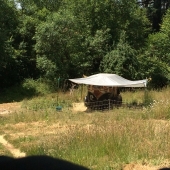




 1
1




Aim High. Fail Small.
Repeat.




"Study books and observe nature; if they do not agree, throw away the books." ~ William A. Albrecht












![Filename: sketch.jpg
Description: [Thumbnail for sketch.jpg]](/t/137166/a/102618/sketch.jpg)




Donnie Hyatt wrote:... I am stretching a length of wire across the gate ...
"Study books and observe nature; if they do not agree, throw away the books." ~ William A. Albrecht




James Freyr wrote:
Donnie Hyatt wrote:... I am stretching a length of wire across the gate ...
What kind of wire?




Donnie Hyatt wrote:
14ga insulated steel wire (the same stuff I buried under the gates)
"Study books and observe nature; if they do not agree, throw away the books." ~ William A. Albrecht




James Freyr wrote:Ok, what kind of insulation on the wire? Or maybe I should ask if this is special electric fence lead wire?
 1
1




The best gardening course: https://gardenmastercourse.com
Permies.com FAQ
 6
6




 3
3





"Study books and observe nature; if they do not agree, throw away the books." ~ William A. Albrecht




Aim High. Fail Small.
Repeat.

| I agree. Here's the link: http://stoves2.com |



